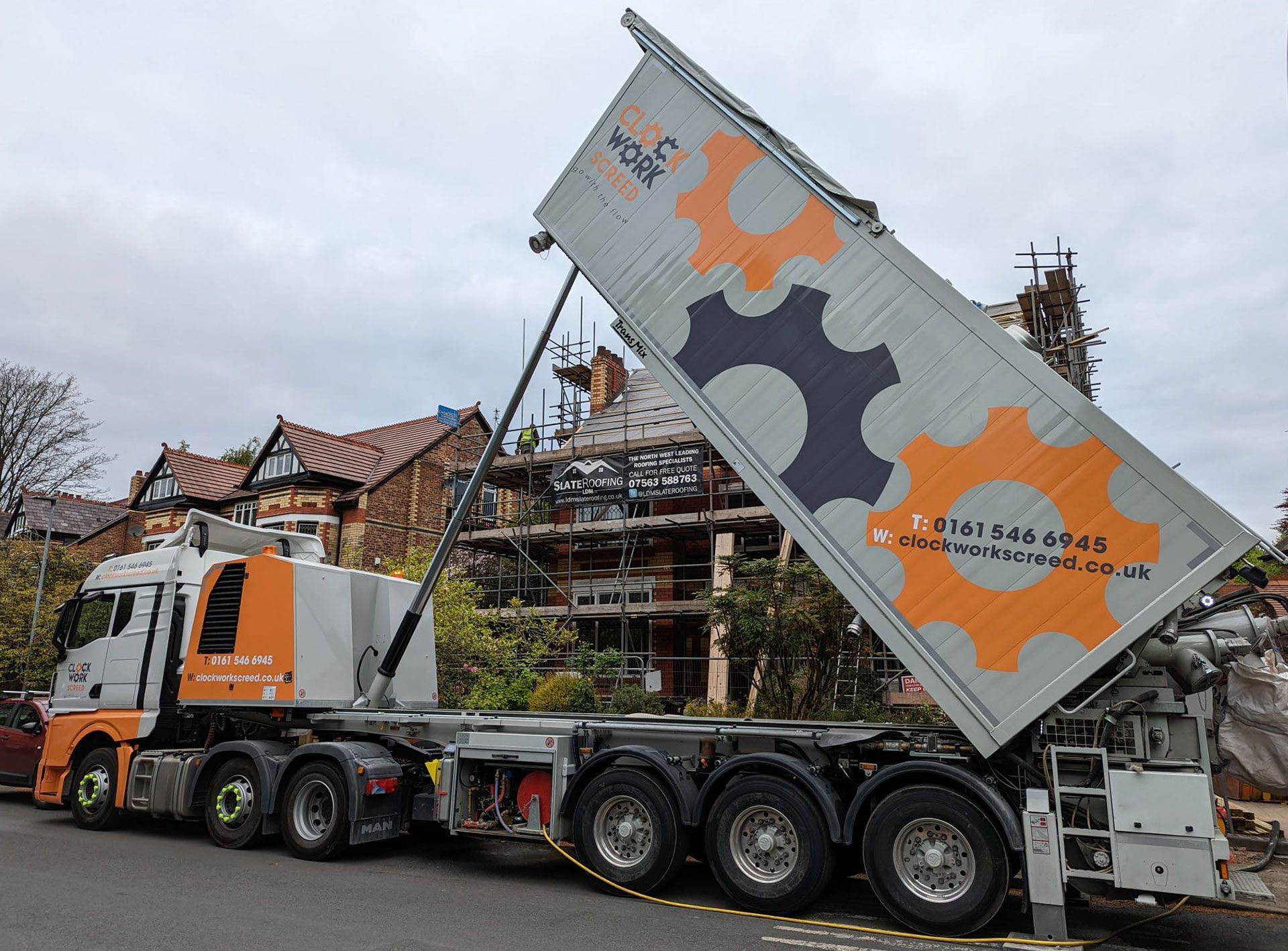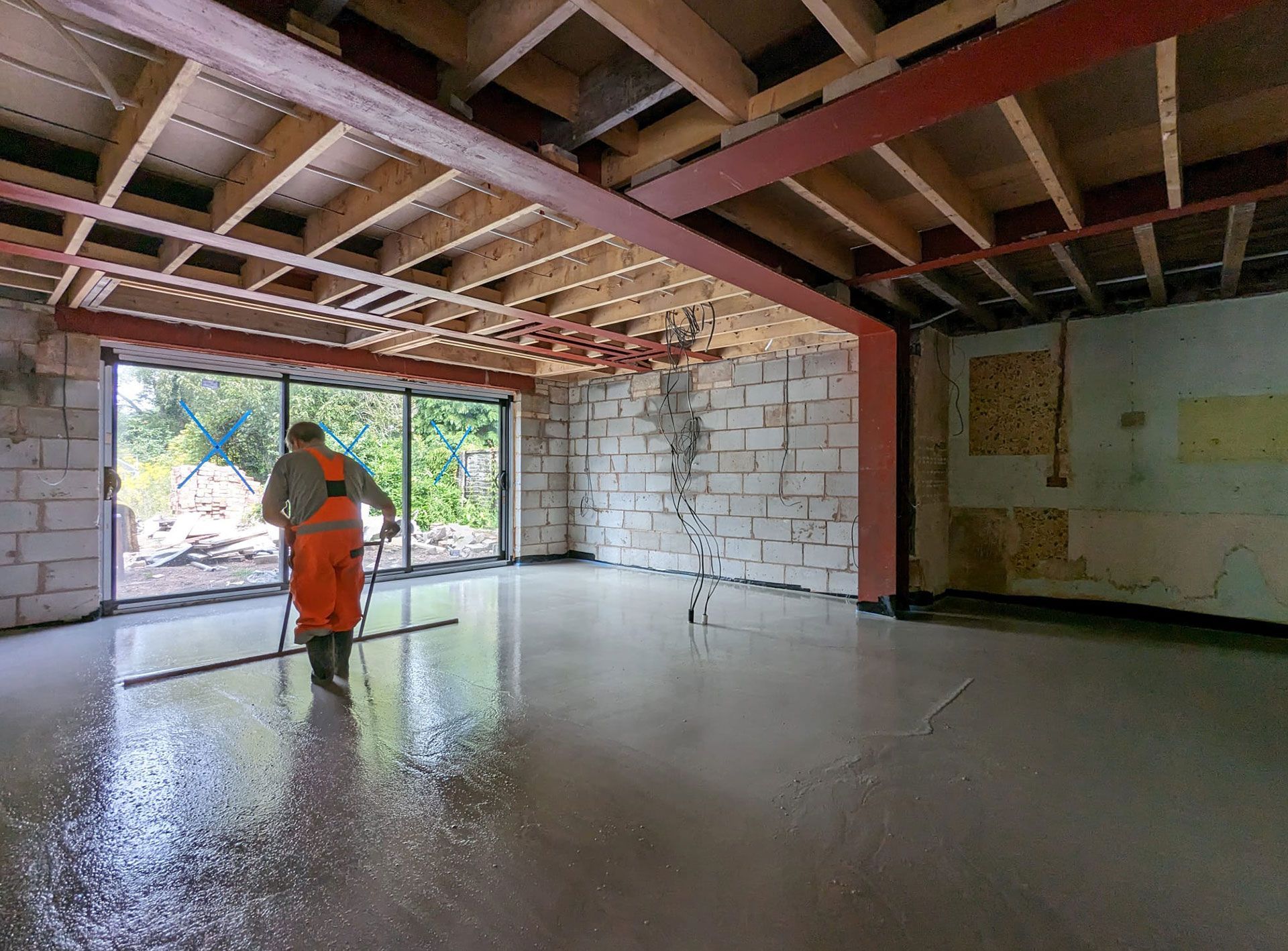Common mistakes to avoid when screeding floors
Screeding floors is a critical step in achieving a smooth and level surface that's ready for final flooring.
Whether you are a main contractor, housing developer, or a homeowner looking for a reliable liquid floor screed solution for your project, it is essential to understand the common mistakes that can occur in the process.
At Clockwork Screed, we specialise in providing industry leading screeding solutions. We are a family business with decades of experience with helping trade and homeowners, and we are here to guide you through some of the common pitfalls.

Inadequate mixing
Problem
One of the most common mistakes made when screeding floors is inadequate mixing of the screed mix.
Properly mixing the screed is crucial to ensure a consistent and homogenous mixture, which is necessary for achieving a strong and durable floor. Insufficient or improper mixing can result in weak spots, uneven distribution of materials, and can compromise the overall integrity of the screed.
This can lead to various issues such as cracking, delamination, and poor bonding with the substrate or floor coverings.
Solution
To avoid these problems, it is important to follow the manufacturer's instructions and guidelines for mixing the screed mix thoroughly. Using the correct tools, such as forced-action mixers, can help ensure a well-mixed screed.
Taking the time to properly mix the screed will contribute to a flat and level surface, enhancing the final appearance and performance of the floor.
Here at Clockwork Screed we use the latest technology is floor screeding, including mobile screed plants. Our Transmix vehicles ensure your screed mix is the perfect ratio to enable a smooth and even finish.
Inadequate surface preparation
Problem
Inadequate surface preparation can lead to poor adhesion, resulting in cracks and an uneven surface.
Planning for a flat and level surface is crucial when screeding floors to ensure a professional and long-lasting result.
Major variations in floor levelness can impact the serviceability of the floor and may require the use of self-levelling screed formulations to correct.
Solution
By properly planning for a flat and level surface, the risk of floor failure and the need for expensive remedial costs can be minimised.
Taking the time to assess and correct major variations in floor levelness ensures a perfect base for floor coverings, making the entire process more efficient and saving valuable time and resources.
To begin the planning process, it is essential to assess the floor's levelness accurately. Advanced electronic devices, such as laser levels, can be used to measure the floor's height at various points, identifying any significant variations. These variations can arise due to uneven substrates or previous installation errors.
Once the floor's levelness is determined, the appropriate measures can be taken. Self-levelling screed formulations can be used to correct small deviations and create a flat surface. These formulations consist of special additives that allow the screed to flow and fill in low spots, ensuring a level finish.

Insufficient curing and drying times
Problem
Rushing the curing process can lead to a screed that's weak and prone to cracking. Insufficient drying and curing is a common mistake to avoid when screeding floors.
After the screed mixture has been applied, it is crucial to allow enough time for the drying and curing process to occur. Rushing this step can lead to several issues down the line.
Firstly, inadequate drying can result in elevated moisture content within the screed, which can negatively affect the performance and durability of the floor.
It can also cause problems with floor coverings, as excess moisture can lead to adhesive failure or the formation of mould and mildew.
Additionally, insufficient curing can lead to a weaker and more brittle screed, as it has not had enough time to fully harden. This can increase the risk of cracking and decrease the overall lifespan of the floor.
Solution
It is essential to carefully follow the recommended drying and curing guidelines to ensure a successful and long-lasting screeded floor.
Here at Clockwork Screed, our decades of experience ensure our liquid screed installation is giving exactly the right amount of time to cure and dry correctly. It ensures we don’t wait around unnecessarily wasting time, but at the same time enough time is given to mean your sub-floor screed installation will be robust, level, and will last for many years to come.
The benefits of hiring a floor screeding specialist
Hiring a liquid floor screeding specialist can provide several significant advantages for your construction project.
To begin with, a specialist has the experience and expertise to handle the technical aspects of liquid floor screeding, ensuring a smooth and even finish that meets your specific needs.
Working with a specialist will know how to work within time constraints to minimise disruptions to your project while freeing up your time because liquid floor screeding is a fast-drying process.
Hiring a liquid floor screeding specialist can result in a cost-effective solution because mistakes can be avoided, as well as any future remedial work, and the high-quality results will last.
Here at Clockwork Screed, we have more than three decades of experience and a depth of understanding of liquid screeding. With that, we can assist you in selecting the ideal screeding for a range of applications.
Because of our installers' knowledge and training, the Clockwork Screed team can also cover 1000m2 of floor area in just one day. Speed simply makes our services more effective and efficient at a lower cost while not sacrificing quality or care. And, in contrast to many other cement-based screeds, the products we use have shrinkage rates of less than 0.05%.
Why choose Clockwork Screed for your next project?
Can I screed the floor myself?
While it's possible to screed a floor yourself, hiring a professional like Clockwork Screed ensures the job is done right, avoiding common mistakes.
How long does it take for the screed to dry?
Drying times vary depending on the type of screed and environmental conditions. Typically, it takes 24 to 48 hours for traditional screeds.
What type of screed is best for my project?
The choice of screed depends on various factors like the purpose of the floor, load, and budget. Consult with Clockwork Screed to find the best solution for your specific needs.
For more information or to schedule a consultation, contact Clockwork Screed today.
We are here to help you achieve the perfect floor, free from common mistakes and tailored to your needs.
Read our collection of case studies to see how we have helped our customers.
To calculate how much screed you will need for your project, use our handy
screed calculator







